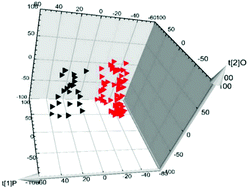Association of fatty acids and lipids metabolism in placenta with early spontaneous pregnancy loss in Chinese women
Abstract
The aim of the present study was to evaluate the association of fatty acids and lipids metabolism in placenta with early spontaneous pregnancy loss (ESPL) in Chinese women. Seventy women with ESPL and 29 healthy pregnant women who asked for legal induced abortion were included in the case and control groups, respectively. The gestational age of the subject foetuses in both the case and control groups ranged from 4 to 10 weeks. The total fatty acids composition in the decidual and villous tissues was detected by gas–liquid chromatography using a standard method. Metabonomics analysis of the decidual and villous tissues was conducted by ultra-performance liquid chromatography quadrupole time of flight mass spectrometry (UPLC-QTOFMS). The total C18:3n-3 in the decidual and villous tissues, total n-3 polyunsaturated fatty acid (n-3 PUFA) in the decidual tissue, and total C18:2n-6 in the villous tissue were all significantly lower in the case group than in the control group. The ratio of C20:4n-6/C20:5n-3 in villous tissue was significantly higher, but prostaglandin I2 as well as hydroxyeicosapentaenoic acid, leukotriene B5 and thromboxane B3 in the villous tissue were significantly lower in the case group than in the control group. In addition, the low content of lysophosphatide in the decidual and villous tissues and the low content of diacylglycerol in the villous tissue were also associated with the occurance of ESPL. In conclusion, the lack of essential fatty acids, high ratio of C20:4n-6/C20:5n-3, abnormal eicosanoids metabolism and low content of lysophosphatide and diacylglycerol in the placenta were all potential risk factors for ESPL in Chinese.



 Please wait while we load your content...
Please wait while we load your content...